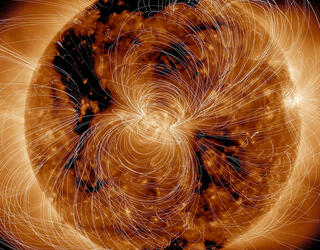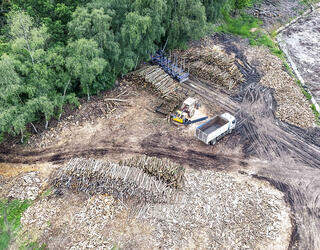Imagining and preparing for the future in order to guide research and public policy is the very purpose of foresight. A perilous exercise, scientists point out. And one that requires dialogue between disciplines, along with solid models accounting for multiple uncertainties.
Article
12.02.2025
Bats are not just a mascot of Halloween, they are also a unique model of viral tolerance and resistance.
Article
11.26.2025
Given that animals are sentient, as established by recent research, what is their attitude towards death? In a recently-published book, the biologist Emmanuelle Pouydebat sheds light on the complex emotions and behaviours of various species in this situation.
Article
11.24.2025
Our topics
Article
10.22.2025
The huge fires that burn down millions of hectares of forest in North America every year have an impact on the other side of the Atlantic. Plumes of smoke and various other pollutants have been...
Article
10.20.2025
The myth of Africa as a wild, enchanting continent conceals a reality of nature under glass orchestrated by Western experts, to the detriment of local populations. The historian Guillaume Blanc...
Article
10.15.2025
A previously unpublished sonnet by Cervantes, recently discovered in an account of Neapolitan festivals, reveals the exceptional socio-professional status of the author of "Don Quixote" in...
Article
10.09.2025
Why is the outermost part of the Sun's atmosphere, the corona, so much hotter than its surface? Ten years after formulating a hypothesis based on a numerical model, CNRS researchers have now...
Article
10.03.2025
The concept of an “energy transition” is misleading, states the CNRS science historian Jean-Baptiste Fressoz. He explains why coal and oil never replaced wood, and that the fight against climate...
Article
09.29.2025
Oil isn't the only treasure hidden in the Arabian desert. French-Saudi archaeological teams are gradually unearthing a hitherto unsuspected heritage, including urban development, languages,...
Article
09.24.2025
Due to global warming and ever greater human activity, phytoplankton blooms are becoming increasingly frequent in lakes and oceans. Their impact on health, the economy and the environment is already...
Article
09.18.2025
Forty-four years after the earliest cases of AIDS were identified, the historian Marion Aballéa retraces the social, economic, cultural, scientific and public health history of the first pandemic...
Article
09.12.2025
With large-scale observation campaigns, innovative data analysis methods and theoretical advances on all fronts, astrophysics and cosmology are entering a high-precision era with the potential to...
Article
09.10.2025
By combining theoretical abstraction with practical impact, Stéphane Mallat has left a lasting mark on mathematics and computer science. From the JPEG 2000 image compression standard to the...
Article
09.01.2025
Few weapons are available to fight antibiotic-resistant bacteria, which continue to cause millions of deaths. However, scientists are currently resuscitating a century-old solution, bacteriophages,...
Article
08.07.2025
The disappearance of non-avian dinosaurs didn’t mark the end of giant organisms in the living world. From enormous mammals to oversized insects and plants, CNRS News takes a closer look at some of...




















